 This article on Siberian Huskies is part of a series to highlight the Big Picture of health, welfare and breeding and to help develop Globally Relevant Integrated Health Profiles (GRIHPs) for many breeds. See IPFD's Get a GRIHP! on Breed Health Initiative.
This article on Siberian Huskies is part of a series to highlight the Big Picture of health, welfare and breeding and to help develop Globally Relevant Integrated Health Profiles (GRIHPs) for many breeds. See IPFD's Get a GRIHP! on Breed Health Initiative.
There are many others doing great work to advance health, well-being, and welfare in this wonderful breed. We reference and link to terrific work, developments, reports, and research from the UK, USA, Sweden, Finland, and more below. Thanks to all of those working on behalf of Siberian Huskies.
This is a 'living document' - so if anyone has more material to share or point us to - please let us know!
Table of Contents
Breed at a glance
 Several regional dogs were used as sled dogs in arctic areas. Many different breeds have evolved from this same stock; one of them was the Siberian Husky. Siberian dogs were imported in the US and the American Kennel Club approved the breed in 1930. In 2021, Siberian Huskies represented the 19th most popular purebred dog in the US.
Several regional dogs were used as sled dogs in arctic areas. Many different breeds have evolved from this same stock; one of them was the Siberian Husky. Siberian dogs were imported in the US and the American Kennel Club approved the breed in 1930. In 2021, Siberian Huskies represented the 19th most popular purebred dog in the US.
Siberian Husky is lightly built, middle sized spitz with all proportions emulating strength and durability. It is an active, energetic, resilient breed, whose ancestors lived in the extremely cold and harsh environment of the Siberian Arctic.
Huskies have gentle and friendly character and no tendencies to guard or defend. The breed has been bred to work in packs, which has resulted the dogs not being aggressive towards other dogs. They enjoy the life in packs.
Siberian Huskies are a very healthy breed with good longevity. Many dogs live to 13+ years.
All colours in coats and eyes are accepted, even so that the eyes differ from each other.
The breed is divided in two lines - show and working. There have been some issues with a few sled dog farms/the commercial dog sledding industry: sometimes dogs are not taken care of the way they should be.
Key Health Conditions
-
Eye diseases:
-
hereditary cataracts (HC)
-
primary open angle glaucoma (PLA)
-
progressive retinal atrophy (X-linked; XL-PRA).
-
Epilepsy
-
Autoimmune disease called eosinophilic bronchopneumopathy (EBP)
-
Hip dysplasia screening is required or recommended in many countries – note that most dogs are healthy.
What do caretakers need to know
Siberian Huskies typically need exercise; and they howl rather than bark. Exercise requirements vary from dog to dog. On social media the “talking dogs” are very often Siberian huskies or husky mixes. A strong dog whose physical and mental needs are not being addressed might make for management challenges.
Huskies are good with children because of their gentle disposition but should never be left unattended with kids because of their strength.
As the dogs are very independent, they are also more challenging to train.
Dogs should be health tested according to breed clubs’ guidelines.
Statistics and Health Strategies
Population Statistics


Observation: Registrations of Siberian Huskies in the French KC have been on the rise over the past 10 years. In the UK registrations have declined from 1940 Huskies registered in 2011 to only 480 registered in 2021.
Health and Longevity Statistics
 Agria - Swedish Breed Profiles
Agria - Swedish Breed Profiles
CONTEXT: For many years, Agria Animal Insurance, Sweden (Agria Djurförsäkring, Stockholm, Sweden) has supported veterinary research and provided statistics on diagnoses for health and life claims to Swedish breed clubs. See Breeds with Swedish Insurance Data and Agria Breed Profiles (where breeds are compared to All Breeds)! We recommend that you download the Agria Breed Profile for the Siberian Husky and study them for full available information. Some excerpts are shown below! The great benefits of the Swedish insurance data are that they include almost 40% of the national population of dogs, so are very representative; note that animals at very old ages are likely under-represented. Most importantly, information is available on all insured dogs, not simply those who get sick or die. This allows calculation of population-based rates (expressed as events per 10,000 years-at-risk) as well as risks and proportions. Statistics are presented as overall morbidity (rate of one or more veterinary care events [VCE]) or mortality (death), by general diagnostic categories, and by specific diagnoses.
Agria Breed Profile: Siberian Husky: 2011-2016
The Siberian Husky has statistics on Veterinary Care Events (morbidity) during 2011-2016. Four main reasons for veterinary care in the breed were:
-
Injury (skin, snake bite, claw, skeletal, gastrointestinal foreign body)
-
Digestive (vomiting, diarrhea, gastroenteritis)
-
Neoplasia (skin, mammary)
-
Locomotor (pain or other symptoms)
Note: All except injuries were much less common than in All Breeds.
Extracts:

Relative Risk Morbidity of Siberian Husky compared to All Breeds: 0.87 (The risk in the breed is lower than for All Breeds.)



Finland: Mortality Data 2012-2021
Finland: Mortality Data 2012-2021 (Source: Finnish Kennel Club breeding database https://jalostus.kennelliitto.fi/frmTerveystilastot.aspx?R=270&Lang=en)
The average life expectancy according to the Finnish statistics is 9 years 9 months. The most common specified causes of death are high age, cancer, and accidents. High number of accidents (at 4 years and 11 months on average) decrease the average life expectancy. Dogs that die because of old age usually reach the age of 13 years.
Worth noting is, that although deaths due to cancer are high, the average age at cancer death is very high.

Breed-specific Breeding Strategies
Finland: Jalostuksen tavoiteohjelma (JTO) in Finnish: https://jalostus.kennelliitto.fi/RotuPDF.ashx?R=270&T=2
Aims/Notes:
-
Maintaining the working quality as a sled dog
-
Maintaining the good reproduction traits in the breed
-
Mapping and understanding eye diseases
-
Understanding the ethiology of eosinophilic bronchopneumopathy
-
Mapping the seizures in the breed
-
Increase the number of dogs screened for spondylosis
Sweden: Rasspecifik avelsstrategi (RAS) in Swedish:
https://www.skk.se/globalassets/dokument/rasdokument/ras-siberian-husky.pdf
Aims/notes:
-
Promote breeding as a working dog and encourage owners to participate in working events
-
Follow the health situation in the breed and react immediately in any possible changes
-
Encourage and promote eye examinations in the breed
Norway: Rasespesifikk avlsstrategi (RAS) in Norwegian:
http://siberian-husky.net/data/uploads/ras/norsk-siberian-husky-klubbs-ras-for-siberian-husky.pdf
Aims/notes:
-
Eye examination is recommended
-
Mentioned:
-
epilepsy
-
zinc-responsive dermatosis (autoimmune skin defect)
-
allergies
-
Maintaining working qualities
France: GRILLE DE COTATION | Test de Caractère T.C1 & Test de Comportement T.C.2:
HGTD DNA Tests for Siberian Huskies
The Harmonization of Genetic Testing for Dogs (HGTD) Basics: The HGTD Searchable Database - Search by Breed, Search by Disease / Test and Search by Genetic Test Provider (GTP) / Lab + Genetic Counselling Resources. HGTD catalogs information provided voluntarily from genetic test providers (GTPs) including information on their company and services, quality measures and expertise, tests offered and more. As of January 2021, the HGTD Database includes 82 academic and commercial genetic test providers (GTPs) in 22 countries. Our searchable genetic phenes (phenes = characteristics/genetically controlled feature) database currently holds information on 300+ phenes across all breeds/types and provides information on each phene: links to the Online Mendelian Inheritance in Animals database (OMIA), gene + mutations, a simple and advanced disease description, inheritance details, links to original publications, patents/licenses, comments from the original researchers/experts on application, and breed specific information (such as research/validation) - where possible. Breed Relevance Ratings (BRR) support evidence-based usage and application of genetic tests. The HGTD database relevance rating indicates the level of available evidence supporting the application of a specific genetic test for a specific breed/type. Currently, the relevance rating is based on a wide variety of evidence sources. This includes peer-reviewed research papers, recommendations from the original researchers/test developers, input from additional experts including veterinary specialists, and breed experts. It is hoped that, by being more informative about what we currently know or do not know about a specific test for a specific breed, that dog health advisors and owners can make more informed decisions. Remember, this Breed Relevance Rating is not everything we need to know about the disease or characteristic; it is focused on the genetic test.
HGTD - DNA tests for Siberian Huskies
Summary:
♦ BIG PICTURE THINKING ♦ Please take into consideration - Most of the conditions with genetic tests are rare in the general population, but valuable for breeders to use to efficiently reduce risks while supporting good genetic diversity in the breed as a whole. See the Genetic Diversity section below. Also be aware that there are many DNA tests that are available for ALL breeds, that while the test itself is valid, the condition may not be a major health concern or included in health strategies for every breed. See the HGTD for a full list of DNA tests including "Trait" and "Parentage" tests.
Test: 2,8-Dihydroxyadenine Urinary Stones
BRR 
HSP comment: Urinary stones can have serious life-long and in some cases, life-threatening symptoms. They seem to develop more commonly in males than in females. The research supporting this test has observed that almost every dog who tests genetically affected for the variant will go on to develop some degree of urinary stones. As diet impacts the development of stones, dogs can be effectively treated with appropriate dietary restrictions and/or medications to reduce stone development. This test may be especially helpful for breeding strategies to eliminate risk for urinary stones caused by this specific variant. While not diagnostic, this test may also be helpful in determining risk in an individual dog and supporting early diagnosis and/or preventative measures.
Test: Achromatopsia (Cone Degeneration, Hemeralopia), AMAL
BRR 
HSP comment: Achromatopsia describes the degeneration of the cones in the eye, leading to day blindness, color blindness, and limited vision – especially of details of objects. There are several different forms of this disease described in many breeds, and it can manifest as a late-onset type. This variant has been found to be causal for AMAL across many breeds related to the Siberian Husky. While this test is useful for breeding strategies, owners with dogs who are genetically affected should also consider clinical eye examinations to determine if (or when) symptoms are present and discuss care and monitoring plans with a veterinary professional.
Test: Degenerative Myelopathy
BRR 
HSP comment: Both clinically rare and of complex inheritance the test is considered poorly correlated with risk for development of DM, and general recommendations are to not use the test for breed-wide breeding strategies, even where there is some evidence of the presence of DM in the breed. While the SOD 1 variant may be commonly found across many breeds, there are few clinical cases observed and confirmed, and in many cases DM has never been observed in the breeds. Please find more information on degenerative myelopathy, here.
Test: Progressive Retinal Atrophy X-linked Type 1 (XLPRA)
BRR 
HSP comment: There are many forms of progressive retinal atrophy across many breeds. This form is normally considered a late onset form, with clinical signs appearing around 3-5 years. The X-linked inheritance means the risks of developing the disease effect males and females differently. Females who inherit the defective gene from one parent and a normal gene from another parent (carriers) won't be affected but may have subtle defects that don't normally impact vision. Male pups who inherit the defective gene from the dams will be effected (there aren't male "carriers") Special breeding advice should be sought, if you are unfamiliar with X-link disease inheritance. Please also note that the genetic test is not a substitute for clinical eye examinations – only a clinical exam can detect symptoms and disease development.
There are a number of tests available, particularly tests for traits such as coat color, that are available to all dog and may be important to specific breeding lines or breeding goals.
Other Tests:
Breed Type/Variety/Identification
HSP comment: Research indicates that the specific development of the Siberian Husky breed means that a genetic test for breed should correlate close to or at 100%, even at high levels of specificity (Brown et. al 2015). No genetic breed test determines pedigree or purebred - this is the privilege of the registration bodies/kennel clubs.
Health Screening Tests for Siberian Huskies
UK
Source: https://www.thekennelclub.org.uk/search/breeds-a-to-z/breeds/working/siberian-husky/
The Kennel Club (Assured Breeders)
The Siberian Husky is a Category 2 breed under Breed Watch; significantly underweight or significantly overweight are points of concern.
There is a recommendation to Check Inbreeding calculators.
Nordic eye examinations (Finland, Norway, Sweden):
Eye examinations are mandatory or highly recommended. Most common findings are hereditary cataracts (cortical and/or posterior polar) and glaucoma / pectinate ligament abnormality (PLA, PLD).

Finland
No mandatory health examinations for parents in litter registration.
Hip dysplasia – 85-95 % of tested dogs have normal (A) or borderline (B) hip joints.

Elbow dysplasia is very rare – 1 % affected.
Epilepsy: the breed club has data on 88 affected dogs. 59 of these were born during 2005-2020. Affected dogs are usually related to each other.
Spondylosis: screening has started slowly during the recent years. So far, the proportion of affected dogs has been 4 %.
Sweden
No mandatory health examinations for parents in litter registration.
Hip dysplasia – 70-100 % of tested dogs have normal (A) or borderline (B) hip joints.

There is no evidence of Elbow Dysplasia in the Swedish Siberian Husky population.
Norway
No mandatory health examinations for parents in litter registration.
Low incidence of hip dysplasia.
No elbow dysplasia in the last ten years.
Hip dysplasia – most dogs have normal (A) or borderline (B) hip joints.

France
Mandatory health examinations for parents in litter registration and for champion titles.
-
Hip dysplasia (the parents must be free).
-
Eye examination:
-
juvenile cataracts and gonioscopy
-
MHOC system (Maladies héréditaires oculaires canines)
-
ECVO system (European College of Veterinary Ophthalmologists)
In Grille de selection, for higher level, dogs need to be screened for eye diseases and hip dysplasia.
TAN (Test of natural aptitudes):
-
Dog must accept harness put on him
-
Dog must accept pulling with light cart
-
Dog must complete a short course alone, or in a pack.
Each part gives 3 points, any 0 will withdraw the dog from breeding.
US
Source: OFA: https://ofa.org/chic-programs/browse-by-breed/?breed=SH
ACVO Eye Exam One of the following:
Siberian Husky Ophthalmic Registry (SHOR)
Eye Examination once 12 months old. Results registered with OFA
Hip Dysplasia One of the following:
OFA Evaluation
PennHIP Evaluation
Summary Reports are available in a PDF format.
Eye Exam reports are available in the Blue Book, pgs. 955-960.
The Siberian Husky Club of America Trust website posts information related to current breed research projects, health topics, rescue and education. Highlights...
-
Siberian Husky de novo Genome Assembly Project Progress Report March 2022: In May of 2021, the SHCA Trust fully funded a project at the University of Wisconsin to sequence the Siberian Husky genome. For the current status of the project and proposed steps for use of the genomic information gathered on Siberian Huskies please see http://www.shcatrust.org/health.html.
Netherlands
In the Netherlands there is one breed club for the breed: Siberian Husky Klub Nederland: https://shkn.nl/.
Mandatory health examinations of parents for litter registration (Vereiningsfokreglement (VFR) of the Dutch Kennel Club, i.e., Raad van Beheer): https://www.houdenvanhonden.nl/fokken-m
Denmark
Mandatory eye examination of parents for litter registration. A dog used for breeding must not have hereditary cataract.
Recommendation: both parents to have hip dysplasia status A, B or C.
Mandatory and recommended health screenings can be found in this link: https://www.hundeweb.dk/dkk/public/openPage/tjenester/avlsrestriksjoner/raseData.html?RAID=2700
Germany
In Germany there are two breed clubs for the breed; both clubs register dogs.
-
Deutscher Club für Nordische Hunde e.V. https://www.dcnh.de/, requirements and recommendations for breeding dogs:
-
Hip dysplasia: healthy or borderline (A or B). A dog with mild dysplasia (C) can be used with an A or B partner.
-
Eye examination: dogs that are PRA-carriers or suffering from hereditary cataracts or PRA, or dogs with affected offspring, cannot be used in breeding. Dogs with milder eye issues can be combined with a healthy partner. Gonioscopy is not mandatory.
-
Breed portrait: https://admin.dcnh.de/docs/rasseportraits/4_DCNH_CN_01_2016_Husky.pdf
-
Siberian Husky Club Deutschland e.V. https://www.huskyclub.de/cms/
Siberian Huskies - Health Screening Summary - by country
R1-Mandatory for registration
R2-Recommended
R3-Recognized
|
Condition
|
UK
|
US
|
Finland
|
Sweden
|
Norway
|
Denmark
|
Germany
|
Netherlands
|
France
|
|
Hip Dysplasia
|
R2
|
R2
|
R2
|
R2
|
R2
|
R2
|
R1
|
|
R2
|
|
Eye Exam
|
R2
|
R2
|
R2
|
R2
|
R2
|
R1
|
R1
|
R2
|
|
|
Epilepsy
|
|
|
R3
|
|
R3
|
|
|
|
|
|
Autoimmune Disease
|
|
|
R3
|
|
R3
|
|
|
|
|
Genetic Diversity - Siberian Huskies
Thorsrud, J.A., Huson, H.J. Description of breed ancestry and genetic health traits in arctic sled dog breeds. Canine Genet Epidemiol 8, 8 (2021). https://doi.org/10.1186/s40575-021-00108-z.
From Thorsrud and Huson 2021...
-
“Average inbreeding of 0.206, median of 0.197, and standard deviation of 0.088.”
-
“The average coefficient of inbreeding (COI) found was similar to results previously collected using runs of homozygosity to assess inbreeding in Siberian Huskies which showed their relatively low levels compared to other common purebreds” [in Sams and Boyko 2019].
Inbreeding coefficient in Embark database:

Posted on the Embark for Breeders Facebook page on April 11, 2022.
"The Siberian Husky originated from the extreme northeast of Siberia and was initially domesticated by the Chukchi, an ancient population that thrived by herding reindeer and moving with each season to new grazing regions.
The breed came to America in 1909. Per our database, Siberian Huskies have an average genetic COI of 16%."
Source: https://www.facebook.com/embarkforbreeders/photos/a.362330434465030/957568148274586/?type=3
Illustrated Standards
SHCA Illustrated Standard: https://www.shca.org/illustrated-standard-1
Judge compendium in Sweden: https://sphk.se/wp-content/uploads/2022/08/Domarkompendium-siberian-husky-faststalld-2022.pdf
UK: Siberian Club of Great Britain: The Breed Standard from a slightly different perspective and a personal view
Commentary on the Siberian Husky Standard - Michael Jennings
References and Resources
DogWellNet Resources
Pedigree Dogs Database: Siberian Husky
HGTD: Siberian Husky
Agria Breed Profile 2011-2016: Siberian Husky
Research
Smith TA, Srikanth K, Huson HJ 2024. Comparative Population Genomics of Arctic Sled Dogs Reveals a Deep and Complex History, Genome Biology and Evolution, 16:9 evae190, https://doi.org/10.1093/gbe/evae190.
Reisen J 2022. Most popular dog breeds of 2021 (American Kennel Club).
Thorsrud JA, Huson HJ 2021. Description of breed ancestry and genetic health traits in arctic sled dog breeds. Canine Genet Epidemiol 8, 8. https://doi.org/10.1186/s40575-021-00108-z.
Johnson LR, Johnson EG, Hulsebosch SE, Dear JD, Vernau W 2019. Eosinophilic bronchitis, eosinophilic granuloma, and eosinophilic bronchopneumopathy in 75 dogs (2006-2016). J Vet Intern Med. 33: 2217– 2226. https://doi.org/10.1111/jvim.15605
Sams AJ, Boyko AR 2019. Fine-scale resolution of runs of homozygosity reveal patterns of inbreeding and substantial overlap with recessive disease genotypes in domestic dogs. G3 GenesGenomesGenetics. 2019;9(1):117–23.
Clercx C 2017. Eosinophilic Bronchopneumopathy in Dogs -- World Small Animal Veterinary Association Congress Proceedings.
Brown SK, Darwent CM, Wictum EJ, Sacks BN 2015. Using multiple markers to elucidate the ancient, historical and modern relationships among North American Arctic dog breeds. Heredity (Edinb). 115(6):488-95. doi: 10.1038/hdy.2015.49.
vonHoldt BM, Pollinger JP, Lohmueller KE, Han E, Parker HG, Quignon P, et al. 2010. Genome-wide SNP and haplotype analyses reveal a rich history underlying dog domestication. Nature 464(7290):898–902.
Hinkemeyer B, Januszewski N, Julstrom B 2006. An expert system for evaluating Siberian Huskies. Expert Syst Appl. 30(2):282–9.
Stanley R, Blogg J 1991. Eye diseases in Siberian husky dogs. Aust Vet J. 68(5):161–2.
IPFD and The World Small Animal Veterinary Association
See our series of Meet the Breed articles in the WSAVA Bulletin and associated Get a GRIHP! Articles on DogWellNet.com:
-
Welsh Corgi
-
Dachshund
-
French Bulldog


-
Australian Shepherd
-
Saluki
-
Golden Retriever
-
Bernese Mountain Dog
-
Black Russian Terrier
-
Pug
-
Finnish Spitz
-
Rhodesian Ridgeback
-
Rottweiler
-
Whippet
-
Belgian Shepherd
-
English Bulldog
-
Irish Soft Coated Wheaten Terrier
-
Dalmatian
-
Border Terrier
-
Staffordshire Bull Terrier
-
Siberian Husky
-
Dobermann
-
Shih Tzu
-
English Setter
-
Beagle
-
Chihuahua
 This article on Siberian Huskies is part of a series to highlight the Big Picture of health, welfare and breeding and to help develop Globally Relevant Integrated Health Profiles (GRIHPs) for many breeds. See IPFD's Get a GRIHP! on Breed Health Initiative.
This article on Siberian Huskies is part of a series to highlight the Big Picture of health, welfare and breeding and to help develop Globally Relevant Integrated Health Profiles (GRIHPs) for many breeds. See IPFD's Get a GRIHP! on Breed Health Initiative.
 Donate
Donate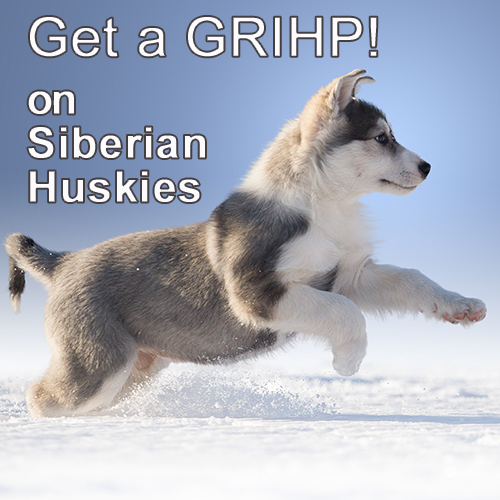
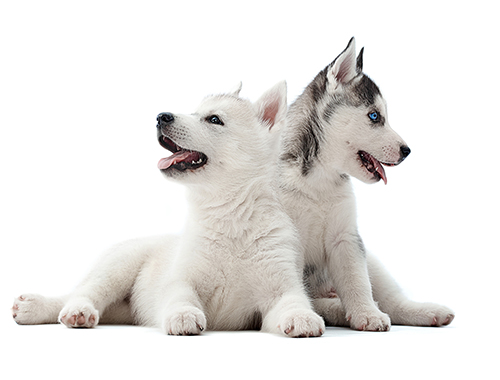 Several regional dogs were used as sled dogs in arctic areas. Many different breeds have evolved from this same stock; one of them was the Siberian Husky. Siberian dogs were imported in the US and the American Kennel Club approved the breed in 1930. In 2021, Siberian Huskies represented the 19th most popular purebred dog in the US.
Several regional dogs were used as sled dogs in arctic areas. Many different breeds have evolved from this same stock; one of them was the Siberian Husky. Siberian dogs were imported in the US and the American Kennel Club approved the breed in 1930. In 2021, Siberian Huskies represented the 19th most popular purebred dog in the US.
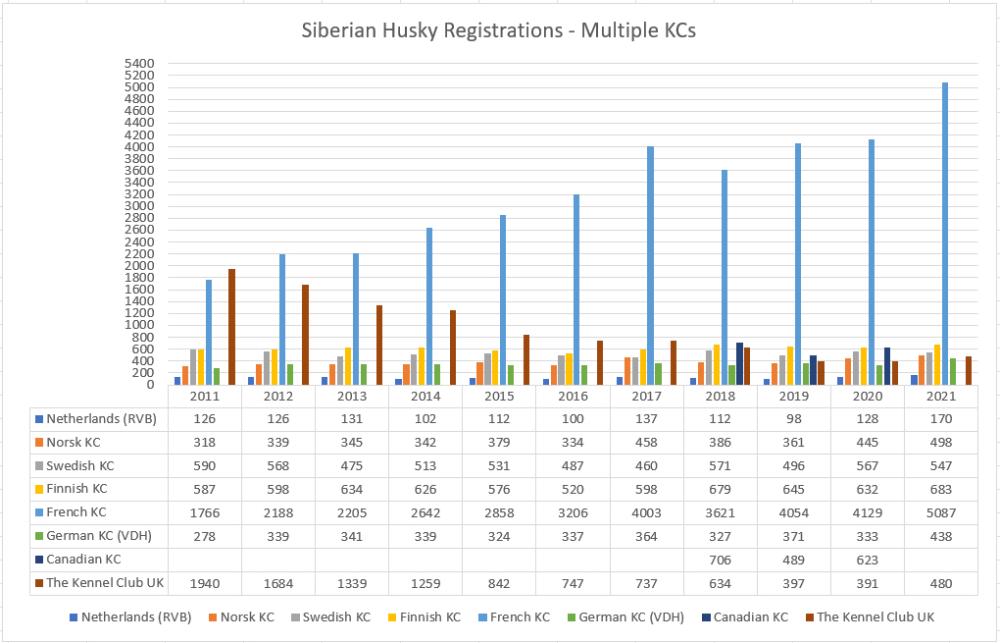

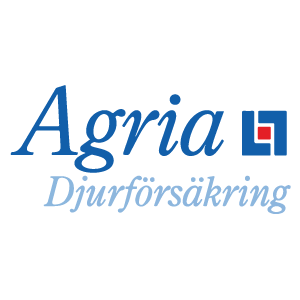 Agria - Swedish Breed Profiles
Agria - Swedish Breed Profiles

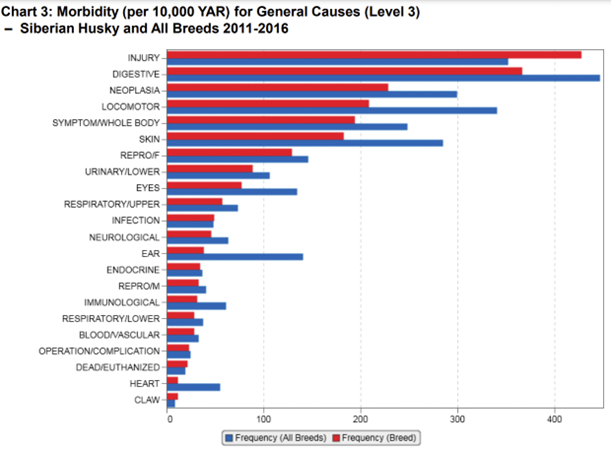


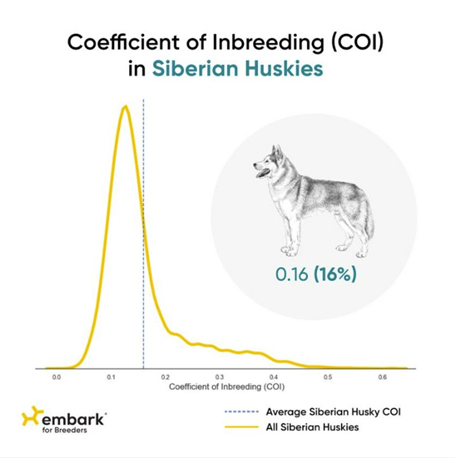

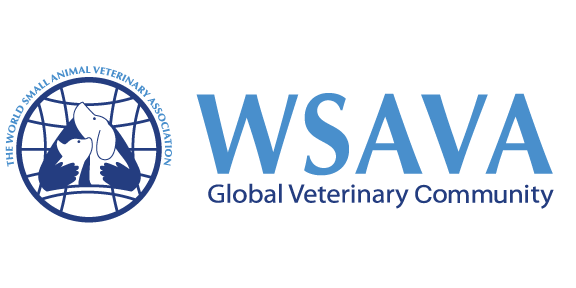
Recommended Comments
There are no comments to display.
Join the conversation
You can post now and register later. If you have an account, sign in now to post with your account.
Note: Your post will require moderator approval before it will be visible.